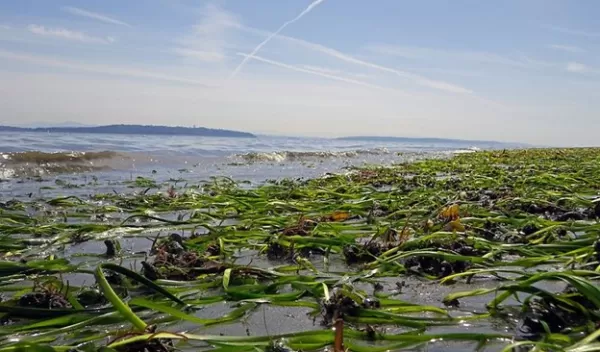
Climate-driven disease devastates seagrass health
In an oceanic omen for climate change's intensifying effects, new research shows that seagrass suffers from a lesion-filled wasting disease through large swaths of intertidal meadows in the Pacific Northwest. The grasses' once vibrant root systems are deteriorating.
The research was published in the journal Frontiers in Marine Science.
"Not only are we seeing more seagrass wasting disease outbreaks, we're seeing a severe impact in the vital nutrient stores of these plants in the roots -- so they become compromised late in the growing season, setting them up for a harder winter," said co-lead author Olivia Graham at Cornell University.
Eelgrass normally thrives in the San Juan Islands, Washington, on the Salish Sea along the Canadian border. Graham describes the seagrass meadow environment as bountiful underwater rainforests, which clean the waters and support herring, salmon, perch, clams, mussels and oysters. Nearby, orca whales feast on Chinook salmon -- the largest of the Pacific salmon -- which live in these tidal grasslands.
Seagrass wasting disease has been present for years, thanks to the warming waters of climate change. The paper confirms that below the muddy beds, the plant's roots are compromised.
The U.S. National Science Foundation-funded researchers marked hundreds of plants at low tide and followed the meadows’ fate over several weeks. This "mark and recapture" method showed that seagrass with disease lesions grew more slowly and produced less storage sugars than their healthy counterparts.
"This answers a long-standing question about whether this disease does actual damage," said senior author Drew Harvell at Cornell. "Unfortunately, it is a resounding 'yes.'"
Eelgrass plants spread vegetatively, Harvell said, noting that seagrass roots have huge systems where carbohydrates and sugars get manufactured and stored to expand their own lush networks.
"We learned that the lesioned plants had reduced starch reserves and grow more slowly, so now we can say that the wasting disease is even bigger than most thought -- and the harm goes well beyond the lesions," Harvell said.
